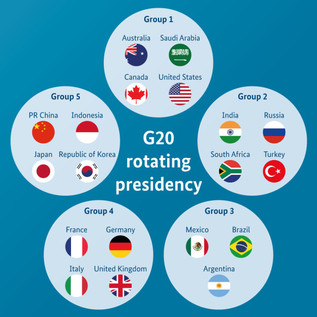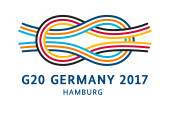G20 Presidency
Rotating G20 Presidency
On 1 December Argentina takes over the G20 Presidency for the next twelve months. The G20 is an informal forum which has no permanent staff of its own. So how do the heads of state and government agree on who will hold the Presidency next?
The G20 Presidency is held by a different member country each year. The term begins in December. On 1 December 2017 Argentina will take over the Presidency of the G20 for the coming year. The South American country, which has a population of around 44 million, will also be hosting the next G20 Summit in Buenos Aires in late 2018.
Japan will follow on from Argentina's G20 Presidency in 2019, Saudi Arabia in 2020.
Five regional groups

The G20 Presidency rotates between members. The 19 member countries are therefore divided up into five groups comprising a maximum of four countries each. Most of the groups are formed on a regional basis, that is countries from the same region are usually put in the same group. Only Group 1 (Australia, Canada, Saudi Arabia and the United States) and Group 2 (India, Russia, South Africa and Turkey) do not follow this pattern. The EU, the 20th member, is not a member of any of these regional groups.
Rotating Presidency introduced in 2010
Each year another country from a different group assumes the G20 Presidency. The countries in a group are each equally entitled to take on the Presidency when it is their group's turn, though. The rotating Presidency was introduced in 2010 when South Korea held the G20 Presidency. And so the countries within a group have to agree on who will organise the G20 Summit.
The G20 is the central forum for international cooperation on financial and economic issues. The heads of state and government of the G20 members have held annual meetings since 2008 to address topics such as global economic growth, international trade and financial market regulation.
Friday, 1 December 2017

